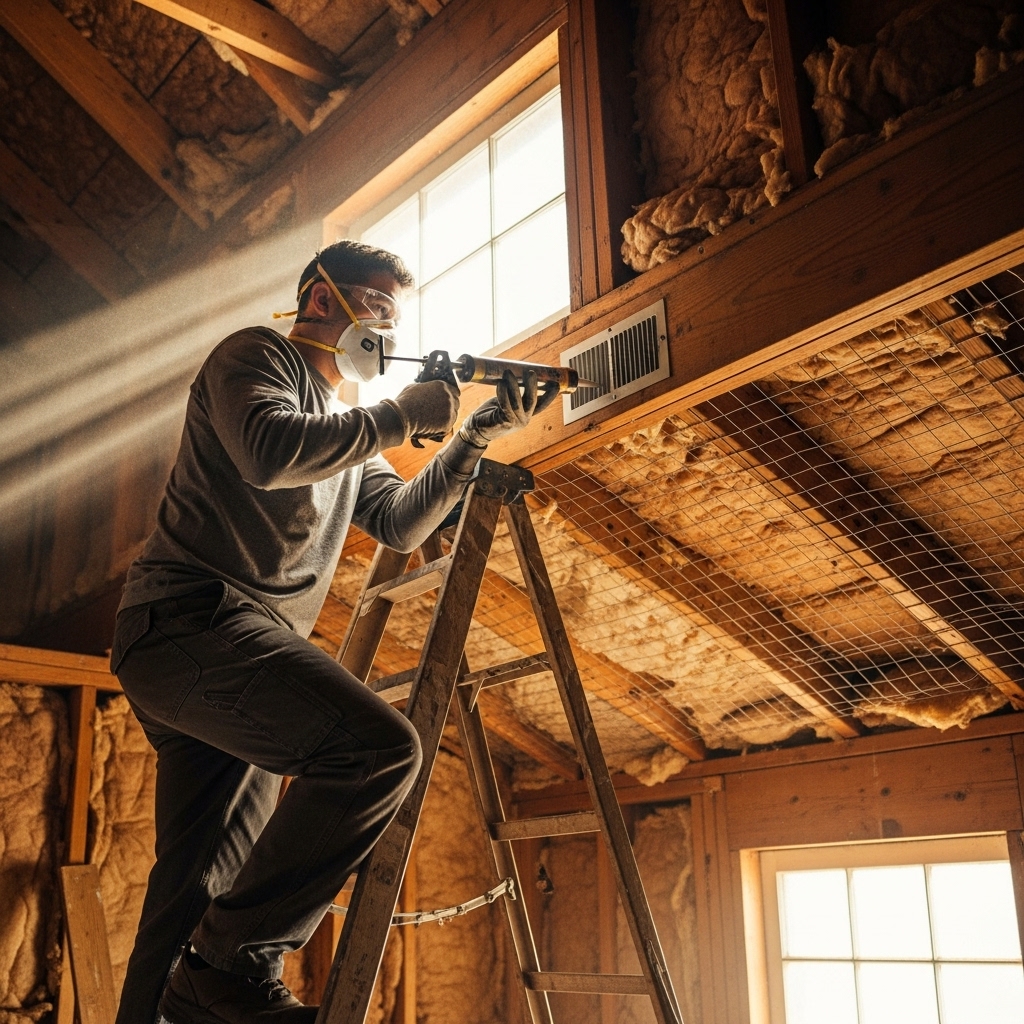When you have lived in Los Angeles long enough, you start to notice the subtle ways the city’s climate and construction styles shape day-to-day home care. Between the dry summers, periodic bursts of rain, and an architectural mix that ranges from 1920s bungalows to modern hillside builds, our homes face unique pressures that make unwanted wildlife intrusion more likely. That is why smart homeowners increasingly look to comprehensive rodent proofing as a foundational part of protecting the health, comfort, and value of their property. What seems like a small concern—a faint scratching in an attic, a bit of insulation disturbed, an odd odor near a utility chase—often hints at a larger pattern that, left unchecked, can lead to damage, contamination, and sleepless nights.
As a local who has spent years inspecting attics and crawl spaces across the county, from the sea-breeze corridors of Santa Monica to the canyon homes of Sherman Oaks and the dense neighborhoods around Koreatown, I can tell you that rodent pressure in Los Angeles is real, seasonal, and often underestimated. Our patchwork of older roofs, shared fences, and decorative vegetation creates an easy grid of pathways, and once rodents discover a vulnerable seam, they return with stubborn consistency. It is not about one-off trapping or scattering repellents; it is about creating a long-term barrier and a healthier indoor environment.
Health, hygiene, and indoor air quality benefits
One of the first and most important benefits of a thorough rodent-proofing plan is the improvement in hygiene and indoor air quality. Rodents carry pathogens and leave dander and droppings that compromise the breathable air in a home, particularly if activity occurs in attics, crawl spaces, or wall cavities where HVAC systems can inadvertently distribute contaminants. In older Los Angeles homes, return air paths sometimes run near or through these transitional spaces, which magnifies the risk. By sealing entry points, removing nesting materials, and cleaning affected areas, you reduce allergen load and the chance of illness for sensitive family members—from young children to older adults with respiratory issues.
Think of it as preventive medicine for your house. When the detritus of infestation is removed and the access points are sealed, the overall microbial burden within the home drops, and you and your loved ones notice it. That early morning mustiness fades. The scratchy throat you chalked up to “LA smog” softens. Pets stop fixating on one suspicious corner of the living room. These are small, everyday signals that your home environment has become calmer and cleaner because you cut off the source of intrusion.
Protecting structure and systems
From a purely structural standpoint, rodents are incredibly hard on a home’s hidden systems. They chew to keep their teeth in check, and that habit leads to nicks in wiring, frayed cable jackets, compromised PEX or flexible ducts, and punctured vapor barriers. Attics and crawl spaces are at special risk, and if you live near mature trees, your roofline is even more exposed. In neighborhoods full of stucco and tile, rodents explore parapets, ridge vents, and the smallest slump in flashing. A comprehensive proofing plan pays attention to these details and fortifies the weaknesses with materials that fit the specific assembly of your home so the protection looks seamless and lasts.
There is also a bigger picture here: the systems that make your home comfortable—insulation, air sealing, and ventilation—depend on staying intact. When insulation is trampled, saturated, or tunneled through, its R-value drops. When ducts are nicked, conditioned air leaks into unconditioned spaces and energy costs rise. Tightening up those entry points and restoring the insulation to a clean, uniform layer helps stabilize indoor temperatures, which is something Los Angeles homeowners appreciate on those hot afternoons when coastal fog fails to drift in and the AC is working hard.
Peace of mind and the daily rhythms of a home
There is a psychological benefit, too, that people rarely put into words until after their project is complete. The home feels quieter. Nighttime is calmer, with no half-perceived scurry in the walls to interrupt sleep. Kitchen cabinets feel safer, closets smell like closets again, and the Sunday routine—coffee, laundry, tidying—returns to its rhythm. In an urban environment that buzzes with traffic, neighbors, and the perpetual hum of life, reclaiming that sanctuary matters more than we admit.
In hillside communities, where homes often sit on piers or step up along a grade, proofing brings an extra degree of reassurance. Rodent movement in these areas tends to follow retaining walls, planter boxes, or ivy runs, and once a level of the house is breached, the pathways inside are easy, especially along plumbing lines. Sealing with attention to those transition zones keeps pests from “laddering” between stories and gives you the confidence that the entire envelope, from foundation vents to fascia, works together.
Financial protection and property value
While we do not talk about exact numbers, it is fair to say that avoiding damage preserves long-term property value. Buyers in Los Angeles are savvy. During inspections, anything suggesting a past or present infestation—staining, damaged insulation, guano-like debris near a vent—raises questions and invites a second look. When your home is well proofed and documented, those questions are easier to answer. The difference is evident in the condition of the attic, the integrity of the crawl space, and the crispness of the roofline details. A clean, odor-free attic is its own kind of curb appeal, even if most buyers never climb the ladder. It reveals care, and care tends to show up in a dozen other places around a home.
There is also the simple math of nuisance. If rodents are kept out, you do not spend weekends resetting traps or chasing mysterious noises. You are not calling emergency electricians because a circuit keeps tripping. Your dog is not suddenly obsessed with a baseboard. The costs you avoid are not just financial; they are energetic. You get your time back, your attention back, and that frees you to enjoy the reason you chose Los Angeles living in the first place—the patios, the sunsets, the quick getaways to the mountains or the beach.
Midway through a project, homeowners often ask what makes modern rodent proofing different from patchwork fixes of the past. The answer is integration. Today’s approach treats the home as an interconnected system. Instead of slapping mesh here and foam there, we consider pressure differences, moisture pathways, and how your particular roof, soffits, vents, and utility penetrations were built. Materials are chosen for durability and compatibility with stucco, wood, or composite. Gaps are sealed with a layered method so that a seal in year one still performs in year five and beyond. The result is not just fewer pests; it is a tighter, more efficient building envelope.
Neighborhood nuances and lasting results
Every part of the city has its quirks. In coastal zones, salt air and fog can accelerate corrosion, so screening and fasteners need to withstand those conditions. In the Valley, heat stretches materials and opens micro-gaps along rooflines and eaves that were tight in spring. In the hills, wind and wildlife interaction demand stronger fastening and careful trimming away of vegetation bridges. When you account for these microclimates and construction differences, proofing holds up better, and the calm you feel six months after the work is finished is the best testament that the plan was right.
Another overlooked benefit is how proofing projects often prompt beneficial housekeeping in the least-visited corners of a home. When an attic is cleaned and sealed, homeowners frequently take the opportunity to organize seasonal storage, retire old boxes, and reset how the space is used. The same happens in garages and utility rooms. The house feels lighter, more intentional, and that feeling tends to ripple into other improvement projects that turn a house into a more peaceful home.
Frequently asked questions
How can I tell if I need rodent proofing if I have never seen a rodent?
You do not have to see a rodent to need proofing. Look for droppings, oily rub marks along frequently used paths, gnawing on wood near utility penetrations, disturbed insulation, or unusual pet behavior. If you notice attic odors after hot days, that can also be a sign. A professional inspection can confirm and map out entry points you may not see from living spaces.
Will sealing entry points trap rodents inside my house?
A well-executed plan follows a sequence: assess, clean, strategically encourage exit, and then seal. This ensures any animals still inside are guided out before final closures. It is one reason why proofing should be methodical rather than rushed.
Is proofing safe for kids and pets?
Yes. The emphasis is on exclusion, sanitation, and habitat modification rather than broadcast chemicals. Work areas are contained, and materials are chosen for durability and safety. Afterward, you are left with a cleaner, more secure envelope.
How long do results last?
With quality materials and attention to detail, results are long lasting. Homes shift and seasons change, so a quick annual check, especially after major heat waves or storms, helps ensure everything remains snug.
Do Los Angeles neighborhoods face different risks?
They do. Proximity to open space, restaurant corridors, and older infrastructure all play a role. A local approach accounts for those patterns and chooses reinforcement accordingly, from vent screening to vegetation trimming strategies.
Can proofing improve energy efficiency?
Absolutely. By restoring insulation, sealing air leaks, and protecting ducts, your HVAC works less to maintain comfort. Many homeowners notice steadier temperatures and quieter operation after a project is completed.
If you are ready to reclaim your home’s calm and protect it for the long run, schedule professional rodent proofing with a local team that understands how Los Angeles homes are built and how our seasons shape them. A thoughtful plan today can keep your attic quiet, your air cleaner, and your family at ease for years to come.

